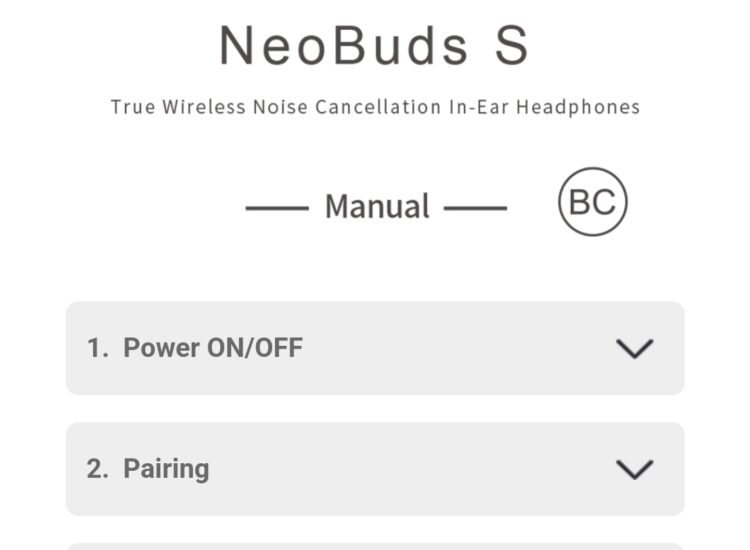The Rise of Ad Blockers: Understanding Their Impact on the Digital Landscape
In the contemporary digital age, the internet has become an indispensable part of our daily lives, serving as a primary source of information, entertainment, and communication. However, this vast and interconnected network is largely sustained by advertising revenue. While advertisements can provide valuable information about products and services, their increasing frequency and intrusiveness have led to the widespread adoption of ad blocking software. This comprehensive article will delve into the phenomenon of ad blockers, exploring what they are, why they have become so popular, their impact on the online ecosystem, the technology behind them, and the ongoing debate surrounding their use and future.
Toc

1. Introduction to Ad Blockers
Ad blockers have emerged as a significant force in the online world, empowering users to take control of their Browse experience by eliminating unwanted advertisements. Understanding the definition, prevalence, and various forms of ad blocking technology is crucial to grasping its overall significance.

1.1. What are Ad Blockers? Defining the Technology
Ad blockers are software applications or browser extensions designed to prevent advertisements from appearing on web pages. These ads can manifest in various forms, including banner ads, pop-up windows, video advertisements, and more. By employing a range of filtering techniques, ad blockers identify and block the content and code associated with these ads, resulting in a cleaner and less cluttered Browse environment for the user.
1.2. The Growing Adoption of Ad Blocking Software
Over the past decade, the use of ad blockers has witnessed a substantial surge in popularity. This growth can be attributed to several factors, including the increasing volume and intrusiveness of online advertisements, growing concerns about user privacy and the tracking of online behavior by advertising networks, and a general desire for faster loading times and reduced data consumption, particularly on mobile devices with limited bandwidth. As the online advertising ecosystem has evolved to become more pervasive and sophisticated, so too has the demand for tools that grant users greater control over their digital experience.
1.3. The Various Forms of Ad Blockers: Browser Extensions, Apps, and More
Ad blockers are not limited to a single format. They are primarily available as browser extensions for popular web browsers such as Google Chrome, Mozilla Firefox, Safari, and Microsoft Edge. These extensions seamlessly integrate into the browser, automatically filtering out ads as users navigate the web. Additionally, ad blocking functionality can also be found in standalone applications that filter network traffic, preventing ads from being loaded at the system level. Some mobile operating systems and even entire web browsers now come with built-in ad blocking features, reflecting the mainstream adoption of this technology.
1.4. The Primary Goal: Enhancing the User’s Online Experience
The overarching goal of ad blockers is to enhance the user’s online experience. By removing unwanted advertisements, these tools aim to provide a faster, cleaner, more private, and less disruptive Browse environment. This focus on user experience has been a key driver in the widespread adoption and continued development of ad blocking technology.
2. The User’s Motivation for Using Ad Blockers
The reasons behind the popularity of ad blockers are varied and reflect a range of user concerns and preferences regarding their online interactions.

2.1. Reducing Intrusive and Annoying Advertisements
One of the most common motivations for using ad blockers is to eliminate intrusive and annoying advertisements. Pop-up ads that interrupt Browse, auto-playing video ads with sound that can be disruptive, and large banner ads that obscure content are frequent sources of frustration for internet users. Ad blockers effectively remove these nuisances, allowing users to focus on the content they are actually interested in without unwanted interruptions.
2.2. Improving Website Loading Speed and Performance
Advertisements, especially those that include rich media such as images and videos, can significantly impact the loading speed of web pages. This is particularly true on websites with numerous ads. By blocking these advertisements, ad blockers can drastically improve website loading times, leading to a faster and more responsive Browse experience. This is especially beneficial for users with slower internet connections or those Browse on mobile devices where page loading speed can be a significant factor in user satisfaction.
2.3. Minimizing Data Consumption, Especially on Mobile Devices
Many online advertisements, particularly video ads and those that employ sophisticated tracking mechanisms, can consume a considerable amount of data. For users with limited data plans, especially when Browse on mobile networks, this data usage can lead to exceeding their monthly allowance and incurring extra charges. Ad blockers help to mitigate this issue by preventing these data-intensive ads from loading, thus saving users money and ensuring they can stay within their data limits.
1. https://ngungtaonghiep.com/mmoga-unlocking-revenue-streams-a-comprehensive-guide-to-google-adsense
2.4. Enhancing Online Privacy by Blocking Tracking
Concerns about online privacy have become increasingly prevalent. Many advertisements are served by third-party advertising networks that track users’ Browse behavior across different websites. This data is then used to create detailed profiles of users’ interests and preferences, which are used to serve targeted ads. Ad blockers often include features that block these tracking scripts and third-party cookies, helping to enhance users’ online privacy and reduce the amount of personal data being collected and shared without their explicit consent.
2.5. Protecting Against Malvertising and Security Threats
Another significant benefit of using ad blockers is the protection they can offer against malvertising. Malvertising refers to the practice of embedding malicious code within advertisements. When these ads are displayed on websites, they can potentially infect users’ devices with malware, even if the user does not click on the ad. By blocking advertisements altogether, ad blockers can help to reduce the risk of users being exposed to these security threats, contributing to a safer online environment.
3. The Impact of Ad Blockers on the Online Ecosystem
While ad blockers offer tangible benefits to individual users, their widespread adoption has had a significant and often challenging impact on the broader online ecosystem, particularly on website publishers and advertisers.
3.1. Significant Revenue Loss for Website Publishers
For the vast majority of websites, especially those that provide free content, online advertising serves as the primary source of revenue. This revenue is typically generated through the display of advertisements to users. When a significant portion of website visitors use ad blockers, publishers lose out on the potential advertising revenue they would have otherwise earned. This revenue loss can be substantial, especially for websites with a large number of visitors, and can directly impact their ability to sustain operations and continue producing content.
3.2. The Challenge to the “Free” Internet Model
The internet, as many users have come to expect it, operates largely on a model where content is provided for free, supported by advertising. The widespread use of ad blockers poses a significant challenge to this model. If publishers are unable to generate sufficient revenue through advertising, they may be forced to explore alternative monetization strategies, such as implementing paywalls, which restrict access to content for non-paying users. This shift could potentially alter the fundamental nature of the internet, making information and entertainment less freely accessible.
3.3. Advertisers’ Responses and Counter-Strategies
Advertisers, facing a growing number of users blocking their ads, have responded with various counter-strategies aimed at reaching their target audiences. These strategies include:
- Developing Less Intrusive Ad Formats: Creating advertisements that are designed to be less disruptive to the user experience, in the hope that users will be less inclined to block them.
- Utilizing Native Advertising: Integrating advertisements into the content of websites in a way that makes them appear more like organic content and less like traditional ads.
- Employing Server-Side Ad Insertion: Inserting advertisements directly into the website’s code on the server, making them more difficult for client-side ad blockers to detect and block.
- Investing in Influencer Marketing: Partnering with individuals who have a significant online following to promote products and services directly to their audience.
These efforts represent an ongoing attempt by advertisers to adapt to the changing landscape and find effective ways to reach consumers in an era of ad blocking.
3.4. The Effect on Content Creators and Independent Media
The revenue loss caused by ad blockers can have a particularly significant impact on independent content creators and smaller media outlets. These entities often rely heavily on advertising revenue to support their work and may lack the resources to implement alternative monetization strategies effectively. A decline in advertising income can lead to a reduction in the quality or quantity of content produced, or even the closure of these platforms altogether, potentially impacting the diversity of voices and perspectives available online.
3.5. The Rise of Alternative Monetization Methods
In response to the challenges posed by ad blockers, many publishers are actively exploring and implementing alternative ways to monetize their content. These methods include:
- Subscription Models: Requiring users to pay a recurring fee to access premium content or an ad-free experience.
- Membership Programs: Offering exclusive content, benefits, or community access to paying members.
- Donations: Soliciting voluntary contributions from users who appreciate their content.
- Affiliate Marketing: Earning a commission by promoting products or services through unique links embedded in their content.
- Selling Merchandise: Offering branded products to their audience.
The success of these alternative monetization methods varies depending on the website, the type of content, and the audience. Many publishers are experimenting with a combination of these approaches to create a sustainable revenue stream in the age of ad blocking.
4. The Technology and Methods of Ad Blocking
Ad blockers employ a variety of technical methods to identify and prevent advertisements from being displayed. Understanding these techniques provides insight into how these tools function and why they are often effective.

4.1. How Ad Blockers Detect and Filter Advertisements
Ad blockers primarily rely on filter lists, which are essentially sets of rules and patterns that identify the network requests, URLs, and code associated with advertising content. When a user’s web browser attempts to load a web page, the ad blocker intercepts these requests and compares them against the rules in its filter lists. If a request matches a rule (for example, a request to a known ad server domain), the ad blocker prevents that request from being completed, effectively blocking the advertisement from being downloaded and displayed on the page.
4.2. The Role of Filter Lists and Their Maintenance
Filter lists are the core of ad blocking functionality. These lists are typically maintained and updated by the developers of the ad blocking software and often by a community of volunteers. They contain vast amounts of information about advertising networks, tracking domains, and specific elements commonly used in advertisements. The effectiveness of an ad blocker is heavily dependent on the quality, comprehensiveness, and regular updates of the filter lists it uses. Popular filter lists include EasyList, EasyPrivacy, and regional or language-specific lists.
4.3. Advanced Blocking Techniques and Customization
Beyond basic filter list matching, some ad blockers employ more advanced techniques to identify and block ads. These can include:
3. https://ngungtaonghiep.com/mmoga-unlocking-revenue-streams-a-comprehensive-guide-to-google-adsense
- Cosmetic Filtering: Hiding elements on a web page that are identified as ads, even if the underlying network request was not blocked.
- Script Blocking: Preventing the execution of scripts that are known to be associated with advertising or tracking.
- Customizable Filters: Allowing users to create their own rules to block specific elements or websites that are not covered by the default filter lists.
These advanced features provide users with greater control over their Browse experience and can help to block even more sophisticated forms of advertising.
4.4. The Evasion Tactics Used by Advertisers
Advertisers are constantly developing new tactics to try and circumvent ad blockers and ensure their messages reach users. Some common evasion techniques include:
- First-Party Ad Serving: Hosting ads on the same domain as the website’s content, making them harder to distinguish from legitimate content.
- Obfuscation of Ad Code: Making the code used to display ads more complex and difficult for ad blockers to identify.
- Using Different Domains for Advertising: Regularly changing the domains used to serve ads to avoid being added to filter lists.
- Testing for Ad Blockers: Websites detecting when a user has an ad blocker enabled and then displaying messages or restricting access to content.
These tactics create an ongoing challenge for ad blocker developers to adapt and update their blocking methods.
4.5. The Technological Arms Race: Blockers vs. Anti-Blockers
The dynamic between ad blockers and advertisers can be described as a technological arms race. As advertisers develop new ways to display ads and track users, ad blocker developers respond by updating their software and filter lists to block these new techniques. Conversely, advertisers and publishers then devise new methods to circumvent ad blockers. This continuous cycle of innovation and counter-innovation is a defining characteristic of the ad blocking landscape.
5. The Ongoing Debate and Future of Ad Blocking
The widespread use of ad blockers has sparked a significant debate with ethical, economic, and technological dimensions. The future of online advertising and the role of ad blockers within it remain subjects of ongoing discussion and evolution.
5.1. Ethical Considerations: User Rights vs. Publisher Rights
At the heart of the ad blocking debate lies a fundamental question of rights. Users argue for their right to a clean, fast, private, and secure Browse experience, free from unwanted interruptions. They view ad blockers as a legitimate tool to achieve this. Publishers, on the other hand, assert their right to monetize their content, often relying on advertising revenue to sustain their operations and provide free access to information and entertainment. This clash of perspectives highlights the complex ethical considerations surrounding ad blocking.
5.2. The Impact on Advertising Quality and User Experience
The rise of ad blockers has, in some ways, prompted a re-evaluation of advertising quality and user experience. Faced with users actively blocking intrusive and annoying ads, advertisers and publishers are increasingly exploring less disruptive and more user-friendly advertising formats. This could potentially lead to a future where online advertising is more integrated, relevant, and less intrusive, ultimately benefiting both users and advertisers.
5.3. Potential Compromises and Solutions
Finding a sustainable middle ground that addresses the concerns of both users and publishers is a key challenge. Some potential compromises and solutions that have been proposed or implemented include:
- Acceptable Ads Initiatives: Ad blockers allowing certain non-intrusive and user-friendly ads to be displayed, provided they meet specific criteria.
- Subscription Models for Ad-Free Access: Publishers offering users the option to pay a subscription fee to browse their website without any advertisements.
- Micro-payments and Donations: Exploring alternative revenue models that allow users to directly support the content they consume through small payments or donations.
- Improved Ad Targeting and Relevance: Advertisers focusing on delivering more relevant and less intrusive ads to users, potentially reducing the desire to block them.
The future of online advertising will likely involve a combination of these approaches.
5.4. The Future Trends in Ad Blocking Technology
Ad blocking technology is also likely to continue to evolve. We may see further integration of ad blocking features directly into web browsers and operating systems. Artificial intelligence and machine learning could be used to develop more sophisticated ad detection and blocking techniques. Additionally, the ongoing battle between ad blockers and anti-blocking technologies will likely drive further innovation on both sides.
5.5. The Long-Term Implications for the Internet’s Economy
The long-term implications of ad blocking for the internet’s economy are still unfolding. If ad blocking becomes the dominant mode of Browse, the advertising-supported model that has underpinned much of the internet’s growth could face significant challenges. This could lead to fundamental shifts in how online content is funded and accessed, potentially impacting the availability of free information and entertainment. Finding a sustainable economic model that supports content creation while respecting user preferences will be crucial for the future health and vibrancy of the internet.
In conclusion, ad blockers represent a significant development in the online landscape, empowering users while posing challenges to the traditional advertising-supported model. Understanding the motivations behind their use, their impact on the ecosystem, the technology they employ, and the ongoing debates surrounding them is essential for navigating the complexities of the modern internet and shaping its future.
















